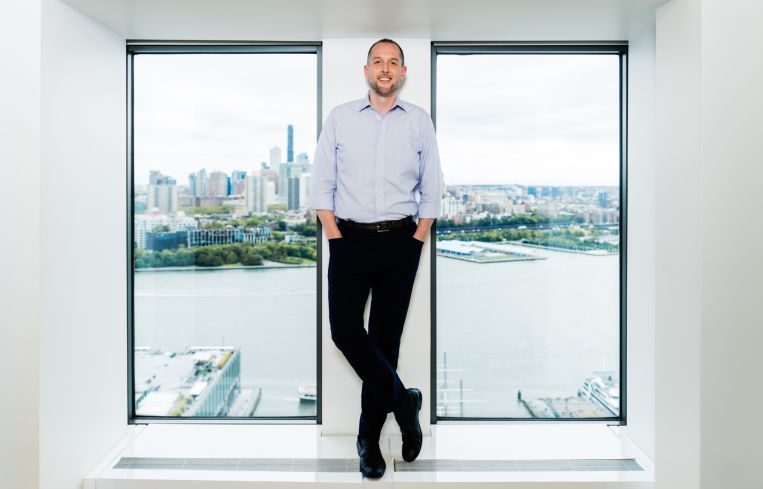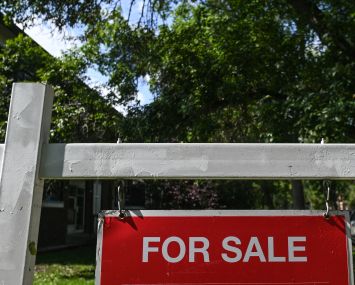Here’s What Matt Partridge Has Planned as Seaport Entertainment Group’s CEO
He took over the role only weeks ago, and his domain includes a lot of Lower Manhattan
By Amanda Schiavo October 21, 2025 12:00 pm
reprints
Paging Matt Partridge. You are needed at the Seaport in Lower Manhattan, stat.
The newly appointed chief executive officer for Seaport Entertainment Group (SEG) once expected his career to be filled with pages similar to that when he was studying biology as an undergrad at Eastern Michigan University, fully intent on becoming a physician.
Now, almost two decades later, Matt Partridge has taken the top seat at the entertainment and hospitality company that owns New York City’s famed South Street Seaport — and other assets — trading an M.D. for a master’s in business administration, international business and finance. Scroll through Partridge’s LinkedIn profile and you’ll see at least half a dozen finance and CFO roles, including at SEG. Now he has added CEO to that list, taking the reins of a company that oversees one of New York City’s historic landmarks.
South Street Seaport is a mix of retail outlets and over 20 bars and restaurants, as well as the South Street Seaport Museum. The neighborhood was once home to a 17th century shipping terminal and later a bustling fish market. Seaport Entertainment Group’s other assets include the Las Vegas Aviators minor league baseball team and the Las Vegas Ballpark, as well as a percentage of the restaurant group Jean-Georges Management from famed chef Jean-Georges Vongerichten. The company also owns an interest in the air rights above Fashion Show Mall on the Las Vegas Strip.
In August 2024, just a few months after Partridge joined as CFO, SEG was spun off from parent company Howard Hughes Holdings into a separate public company. A little less than a year later, Bill Ackman’s Pershing Square Holdings would acquire a major stake in Howard Hughes. (Howard Hughes is not involved in SEG, Partridge said.)
Partridge has been CEO for over a month, and he recently sat down with Commercial Observer to discuss his goals for the company, what’s going on at the Seaport, and how SEG’s other assets are performing.
This interview has been edited for length and clarity.
Commercial Observer: Why did you decide to take on the CEO role for Seaport Entertainment Group?
Matt Partridge: I like building things. I’ve been part of a development company where we built physical assets. I’ve been part of companies who have repositioned properties. A lot of what we did in the hotel and restaurant space at Pebblebrook Hotel Trust was repositioning hotels and renovating them and re-concepting them. So I like the building aspect of it. I like building teams. I like building infrastructure.
So, for me, it was an opportunity to come somewhere where all the bones were there. It’s an amazing property. It has some of the most interesting architecture and history in all of New York City. And we get to reinvent what this is for the community and for New York City overall.
What is the ultimate goal for the Seaport area?
To create a neighborhood that complements the community and serves as the hub for Downtown Manhattan. It’s a part of the city that’s evolving rapidly. Ten years ago it was largely an office community, and today it’s one of the fastest-growing residential communities in the city. So creating a space that not only works for the local community, but also works for the tourists that come down here, and sort of integrates it all into one, is the ultimate goal.
We’ve signed up [immersive experience provider] Meow Wolf, which will be a great addition. We have tremendous food and beverage down here already, with some of the Jean-Georges concepts and [chef and restaurateur] Andrew Carmellini. We’ve partnered with some local restaurateurs to come here, and then we’re working on the rest of the merchandising and placemaking plan.
So it will be a place with a mix of everything?
Yes, and that is exactly what New York is, right? Every neighborhood has a mix of everything, and they all have their own feel. We’re trying to build on what exists here. We’re not trying to completely change it. We’re trying to reorient it, and use the space that exists today, that maybe hasn’t been occupied in the last few years, and bring in the right tenants and concepts that not only complement what exists here, but also can serve the community.
How is SEG going to balance out the community that lives and works here with the tourism the Seaport attracts?
They all have to live in one symbiotic relationship. What our focus is, especially in the Seaport’s more historic cobblestone area, is to be a little bit more local focused. I think it’s providing a mix of food and beverage and experiences, but also some of the daily needs that maybe don’t exist down here but are going to be needed as the population continues to grow. And that could be anything from a hair salon to needing some more grocery down here.
Then as you migrate toward the pier we’re going to be a little bit more focused on the entertainment aspect of what we can provide. We’re putting a big emphasis on big marquee events. The infrastructure is being built for the New York City Wine and Food Festival, which runs Oct. 15 to 19, and we hosted the Fourth of July Macy’s fireworks earlier this year.
I think that that mix of providing culturally relevant events down here — local community events, but also programming and merchandising of the overall neighborhood in a way that works for both tourists and the local community — is going to be what’s ultimately going to allow us to be successful.
What is the status of the year-round concert venue that had been proposed for the rooftop at Pier 17?
It was contemplated. Ultimately, we’ve decided not to move forward with that. There’s just a lot of complications that go into putting a temporary structure on the roof near the river during the winter. And so some of those considerations, as we got further and further into it, we just decided it is not the right time.
I wouldn’t completely close the door on it, but there’s no plans for in the foreseeable future.
Pace University’s Downtown campus is about a 10-minute walk from the South Street Seaport. Do you think about the Pace students when planning for the community at large?
Yes! So [Sterling Investors’] David Hirsh, who sits on our board, is also on the board at Pace, so we definitely have a focus on that community as well. We have the Lawn Club here that some of the students at Pace gravitate toward because it’s fun and it’s social, and it’s oriented around lawn games. That definitely lends itself to more of a younger crowd, so Pace is definitely part of the community I am talking about.
I think the Pace students probably value different things than the local families who value different things than maybe some of the local business communities. We try to listen to those voices and be considerate of all of them.
How has the leadership transition been, now that you have taken over for former CEO Anton Nikodemus?
It has been a great opportunity for me to step into this seat. I’ve got a tremendous team around me that’s going to ensure that I’m successful. Ultimately I think it went as smoothly as possible. And Anton and I still have a great relationship. He’s still on board as an adviser to the company, and he is very supportive of me, which I can’t be more appreciative of. So it’s been very smooth.

What is the current status of the Tin Building — a market and food hall inspired by the global travels of Jean-Georges — at 96 South Street?
The Tin Building is an amazing facility. The team did a tremendous job of building that and programming it. We have a great relationship with Jean-Georges, but it has had its financial challenges just given there’s a lack of density down there today. That’s obviously changing with all the office conversions and the residential that’s being built, and so we’re trying to think through that operating model to make it more sustainable without necessarily materially impacting the design and everything that makes it such an amazing facility.
It’s lost money each year that it’s been opened. So it’s a balance of not wanting to holistically change what is an amazing experience for people, but obviously we can’t continue to lose money. We have to look at things differently and adjust on the margin to make it more financially viable. The future of the building is still to be determined.
Why did SEG sell the lot at 250 Water Street to Tavros?
We are a hospitality and entertainment company that has a focus on real estate and the utilization of the real estate for hospitality and entertainment purposes. We’re not developers, and, for us, having that project sold to somebody who can move it along faster than us, who can be intently focused on it, because that’s what they do, was the rationale for why we sold it.
We think Tavros will do an amazing job of building that building and ultimately bringing all of those residential units and the commercial units down to the Seaport, which is going to be great for us.
How is SEG’s relationship with Howard Hughes Holdings since the spinoff?
They are not involved anymore, but we still have a good working relationship. Obviously, the Las Vegas Aviators baseball team and the baseball stadium is in the middle of Summerlin in Las Vegas. Howard Hughes still owns the majority of that project.
Is Bill Ackman still an investor in SEG?
Yes, his platform Pershing Square and their holdings have remained consistent since we separated from Howard Hughes.
What is the ultimate vision for the Seaport neighborhood and SEG as a company?
We want the neighborhood to be a destination that people from all walks of life — whether you live here in New York, whether you’re local to Lower Manhattan, or whether you’re a tourist — want to come to. The onus is on us to develop the programming and the merchandising and all the partnerships and events to pull people down here.
We also want it to be a neighborhood where people can live. It’s not just for tourists. It’s not just for people outside of the neighborhood to come to. It has to have a local component to it that supports the local community.
For the company more broadly, we have assets that, again, fall on this thread of hospitality and entertainment with real estate components to it. So it’s that platform that we’re building around — whether it’s events, whether it’s food and beverage, whether it’s live entertainment like sports and concerts — and finding other opportunities, either in New York or in other markets where we can bring that platform and that expertise to create those types of experiences. And those opportunities can be in a neighborhood like the Seaport, or it can be in an individual asset where we bring something that can be integrated into that community and provide those dynamics.
Amanda Schiavo can be reached aschiavo@commercialobserver.com.
CLARIFICATIONS: This story has been updated to reflect that Pershing Square is an investor in SEG, but not a majority stakeholder. And, due to an editing error, it was also updated to reflect that Pershing Square owns a significant stake in Howard Hughes, but not the company outright.


